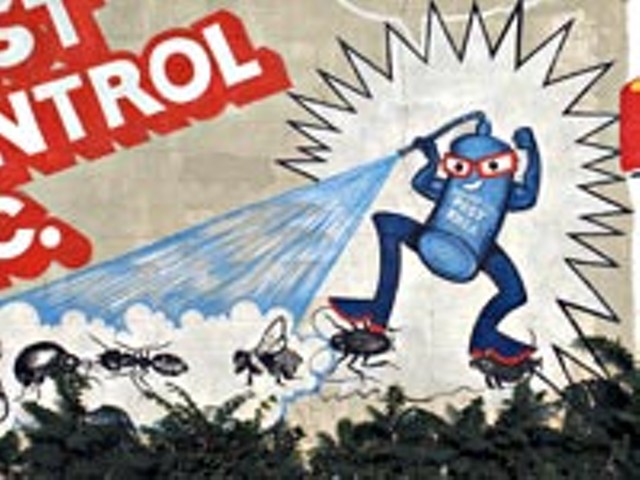It’s all tied up, but even if you haven’t been keeping track of the score, you can feel that the game is close by the tension of the players and the intensity of the sounds from the court. Above a bass-heavy din of hip-hop beats pouring from a nearby parked Jeep, the final drive starts with a crescendo of sneakers skidding against the court, the ring of the ball on the pavement, hands slapping sweaty backs and short, desperate grunts.
Then — for the smallest part of a second — there is silence. The ball is in the air and while it travels everyone seems to stop moving or grunting or yelling “hey, hey.” For one second, the girls at courtside seem to stop their high-pitched chatter and spectators stop shaking the chain-link fence surrounding the court. Everything stops.
It’s the clang of the ball hitting the back of the rim and falling through that brings everything back into real time. The players on the court burst into action — moaning, cursing, yelling, huffing, mumbling congratulations.
These are the sounds that fill the air above the Peterson Playfield courts every single day. The same scenes unfold at outdoor basketball courts all over the city, all summer long. It happens in schoolyards and parks, over cracked concrete and asphalt so hot under the sun that you can see waves of heat coming up from the ground like fumes from gasoline.
“When the weather gets nice, this is where I live,” says Marcus Kelly through deep breaths. It’s easy to believe him — he’s been out here running the show for the last two hours. On the renovated courts of Peterson Playfield (on Greenfield Road between Outer Drive and West Seven Mile Road), he’s a high-ranking local celebrity.
“I consider this is my summer home.”
While we talk, he wipes the sweat off his forehead and eyes the game in progress, explaining the finer points of pickup basketball etiquette, which are as intricate and complex as those of any secret society.
The games are scored using one point per basket, two if you hit one from beyond the regulation three-point line (a feature that many outdoor courts don’t have). Two half-court games run simultaneously on one court. Games are usually played until a team reaches 11, 15 or 21 points, depending on how large the demand is from people along the sidelines. Loosely affiliated teams range in size from three players to five and winners get to stay on the court if they so choose.
Kelly, a 28-year-old, 5-foot-9 inch city worker, scored the winning basket in the last game, and as he explains the rights of the winners and palms his worn basketball, it’s obvious that he would rather be playing than on the sidelines talking about it.
“This is no country club,” he explains. “Sure, if you come around to the same place every day, you figure out who can run and who can’t, but outsiders are welcome. Sometimes guys around here just get their ass whooped until they don’t anymore, until they can hang with the level of the other players. If you can’t step up to the game, you’re going to get schooled enough so you’ll have to find someplace else to play.”
According to the locals at Peterson, during the peak of the summer the grounds here attract some of the best players in the city. People like to point out guys who “could have been pro if they wanted to” dashing back and forth, dominating the game. The players are mostly African-American, but the games are dotted with people of almost every ethnicity. They are mostly between the ages of 17 and 30, but in the mix you’ll find the occasional lanky 15-year-old, or ballers with graying hair who are probably pushing 50.
“You get a lot of young kids who want to get out there and prove that they can run, and you get a lot of older guys who want to prove that they still got it,” explains Scott Sinclair, a 6-foot-2-inch twentysomething who grew up playing basketball on the courts of Ypsilanti. “It’s a pride thing.”
Watching game after game unfold, it’s clear that pride is one of the major motivating factors. Even though some bigger games that pit teams of local standouts against each other occasionally may have a few $20 bills riding on their outcome, the city workers and phone operators and college kids who play here are uncontaminated by the glamorous trappings of the big leagues. It might be a worn adage, but they truly play for the love of the game.
“When I play ball, I don’t think about getting a break to play in the big leagues,” Kelly says. He’s making closing statements, now that the second game he has missed is nearing an end and the sun is starting to fade.
“I just sit there all day and watch the clock, until I can get out here and do what I love to do. It’s playing ball. It’s as simple as that.”
Take me back to the index of Metro Times' Summer '03 Guide. Nate Cavalieri is a Detroit-based writer and musician. E-mail [email protected]





